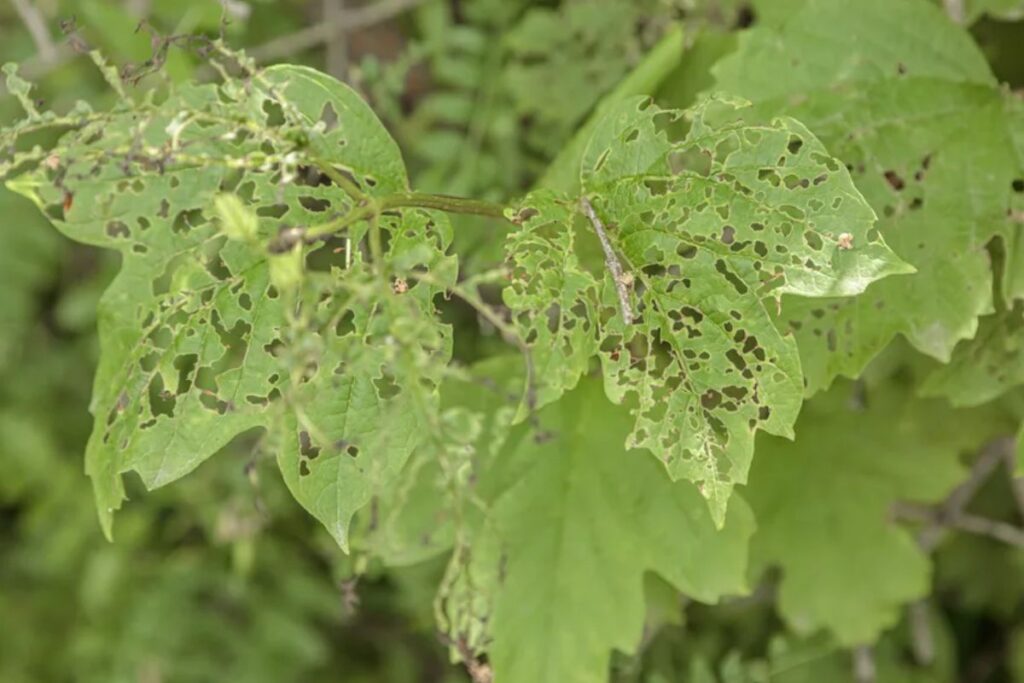Cucumber plants are a popular choice among gardeners due to their versatility and delicious produce. However, sometimes cucumber leaves turn white, which can be concerning for growers.
In this article, we will explore the various causes behind cucumber leaves turning white and provide practical solutions to fix this issue.
Whether you’re an experienced gardener or a beginner, understanding the reasons for this discoloration and knowing how to address it will help ensure the health and productivity of your cucumber plants.
Key Takeaways:
- Cucumber leaves turning white can be due to nutrient deficiencies, diseases, pests, environmental factors, or improper care.
- Address nutrient deficiencies by using fertilizers or soil amendments.
- Manage diseases and pests promptly to prevent white leaf discoloration.
- Optimize environmental conditions such as sunlight, temperature, and water to maintain healthy leaves.
- Practice proper care techniques, including balanced fertilization and watering, to prevent white leaves on cucumber plants.
What Is Powdery Mildew? (White Spots on Cucumber Plants)

Powdery mildew is a fungal disease that commonly affects cucumber plants. It is caused by various species of the fungus belonging to the Erysiphales order. This disease gets its name from the characteristic powdery white or grayish fungal growth that appears on the surfaces of leaves, stems, and sometimes even fruits.
Symptoms of Powdery Mildew
The initial symptoms of powdery mildew on cucumber plants include the appearance of small white or gray spots on the upper surface of leaves. As the disease progresses, the spots enlarge and merge together, forming a powdery or dusty coating.
Factor Favoring Powdery Mildew Development
Powdery mildew thrives under specific environmental conditions. The fungus prefers moderate temperatures ranging between 60°F and 80°F (15°C to 27°C) and high humidity levels.
Related Reading:
- Controlling Cucumber Anthracnose: Tips and Strategies
- Cucumbers Cracking: Reasons Why Your Cucumber Fruit Splits and How to Prevent It
- Everything You Need to Know About Baby Cucumbers
- Why There Is Wax on Cucumbers?
- Cucumber Hydrosol: The Natural Elixir for Skin and Health
Why Do Cucumber Leaves Turn White?

Cucumber leaves turning white can be caused by several factors, including nutrient deficiencies, diseases, pests, environmental conditions, or improper care.
Let’s delve into each of these causes to gain a comprehensive understanding.
1. Nutrient Deficiencies
Cucumber plants require a balanced supply of essential nutrients to thrive. When they lack specific nutrients, their leaves can turn white. The most common nutrient deficiencies that lead to leaf discoloration include:
i. Nitrogen Deficiency
Nitrogen is crucial for the healthy growth of cucumber plants. When nitrogen levels are insufficient, leaves may turn pale or yellowish-white. Nitrogen deficiency often affects older leaves first, which gradually lose their green color and become bleached.
To address this issue, consider fertilizing your plants with a nitrogen-rich fertilizer or incorporating organic matter into the soil.
ii. Potassium Deficiency
Potassium is essential for overall plant health and plays a vital role in photosynthesis, nutrient absorption, and disease resistance. When cucumber plants lack potassium, their leaves can develop white or yellow spots, which eventually turn necrotic.
To remedy potassium deficiency, use fertilizers containing potassium or add potassium-rich amendments to the soil.
iii. Magnesium Deficiency
Magnesium is a critical component of chlorophyll, the pigment responsible for the green color in plants. When cucumber plants experience magnesium deficiency, their leaves may turn white, or yellow, or develop interveinal chlorosis, where the leaf veins retain their green color while the areas between them turn pale.
To rectify this deficiency, apply magnesium sulfate or Epsom salts to the soil or as a foliar spray.
2. Diseases
Several diseases can cause cucumber leaves to turn white. It is essential to identify and address these diseases promptly to prevent further damage to your plants. Common diseases associated with white cucumber leaves include:
i. Powdery Mildew
Powdery mildew is a fungal disease that affects many plants, including cucumbers. It manifests as a powdery white coating on the leaves, stems, and fruits. This fungal infection thrives in warm and humid conditions.
To control powdery mildew, ensure adequate air circulation around the plants, avoid overhead watering, and apply fungicides as recommended.
ii. Downy Mildew
Downy mildew is another fungal disease that affects cucumbers, causing pale spots on the leaves that eventually turn white or gray. The undersides of the affected leaves may develop a fuzzy, purplish growth.
Preventing downy mildew involves planting resistant cucumber varieties, ensuring proper spacing between plants, and applying fungicides when necessary.
iii. Bacterial Leaf Spot
Bacterial leaf spot is a common bacterial disease that affects cucumber plants. It causes water-soaked lesions on the leaves, which later turn white or gray and may have a yellow halo.
The disease thrives in wet conditions, so avoid overhead watering and provide adequate spacing between plants for good air circulation. Copper-based fungicides can help control bacterial leaf spot.
3. Pests

Several pests can cause cucumber leaves to turn white due to their feeding habits. Here are a few pests to watch out for:
i. Spider Mites
Spider mites are tiny arachnids that feed on the sap of cucumber plants, causing stippling and discoloration of leaves. The affected leaves may turn white, yellow, or bronze.
To control spider mites, regularly spray your cucumber plants with a strong stream of water, use insecticidal soaps or oils, or introduce predatory mites that feed on spider mites.
ii. Whiteflies
Whiteflies are small insects that suck sap from plants, leaving behind sticky honeydew and causing leaf discoloration. They can transmit viruses to cucumber plants, leading to further damage.
To manage whiteflies, use yellow sticky traps, apply insecticidal soap or neem oil, or introduce natural predators like ladybugs or lacewings.
iii. Aphids
Aphids are soft-bodied insects that feed on cucumber plants by sucking sap from the leaves. They can cause curling, yellowing, and stunting of leaves, resulting in white discoloration.
To combat aphids, spray your plants with a strong jet of water, use insecticidal soaps, or introduce natural enemies such as parasitic wasps or ladybugs.
4. Environmental Conditions
Environmental factors can also contribute to cucumber leaves turning white. Understanding and mitigating these conditions can help maintain the health of your cucumber plants:
i. Excessive Sunlight
Intense sunlight and heat can cause cucumber leaves to become white or pale. This condition, known as sunburn or sunscald, typically affects leaves that are not adequately shaded by the plant’s canopy.
To protect your cucumber plants from excessive sunlight, consider providing shade cloth or planting them in areas with partial shade.
ii. Temperature Extremes
Cucumbers prefer moderate temperatures, and extreme heat or cold can stress the plants, leading to leaf discoloration. High temperatures can cause white patches or bleaching of leaves, while cold temperatures can result in yellowish-white or brownish discoloration.
Ensure your plants are grown in suitable temperature ranges and provide protection during extreme weather conditions.
iii. Water Stress
Both underwatering and overwatering can cause cucumber leaves to turn white. Insufficient watering can lead to wilting and discoloration, while excessive watering can result in root rot, nutrient leaching, and subsequent leaf discoloration.
Maintain consistent soil moisture by watering deeply but infrequently, and ensure proper drainage to avoid waterlogged conditions.
5. Improper Care
Improper care practices can contribute to cucumber leaf discoloration. Avoid the following to prevent white leaves on your cucumber plants:
i. Overfertilization
Excessive fertilizer application can disrupt the nutrient balance in the soil and lead to nutrient imbalances in plants. This can result in white or yellowing leaves.
Follow the recommended fertilizer application rates and schedules for cucumbers to prevent overfertilization.
ii. Improper pH Levels
Cucumber plants prefer slightly acidic to neutral soil with a pH range of 6.0 to 7.0. If the soil pH is too high or too low, it can affect nutrient availability and cause leaf discoloration.
Test your soil regularly and adjust the pH if necessary using appropriate soil amendments.
iii. Improper Pruning
Pruning is essential for maintaining the health and productivity of cucumber plants. However, excessive pruning or improper techniques can stress the plants and lead to white or pale leaves.
Follow proper pruning practices, such as removing only the necessary foliage and avoiding excessive leaf removal.
iv. Improper Watering
Inconsistent or incorrect watering practices can contribute to cucumber leaf discoloration. Watering too little or too much can stress the plants and result in white leaves. Maintain a regular watering schedule, ensuring the soil is evenly moist but not waterlogged.
How to Fix White Leaves on Cucumber Plants?

Now that we have explored the various causes of cucumber leaves turning white, let’s discuss how to fix this issue and restore the health and vitality of your cucumber plants.
Identify the Cause
First and foremost, identify the specific cause of white leaves on your cucumber plants. By understanding the underlying problem, you can tailor your approach and address it effectively.
Adjust Nutrient Levels
If nutrient deficiencies are the root cause, adjust the nutrient levels in your soil. Conduct a soil test to determine the specific nutrient deficiencies and amend the soil accordingly. Use fertilizers or organic matter rich in the lacking nutrients to promote healthy leaf growth.
Combat Diseases and Pests
If diseases or pests are causing white leaves, take appropriate measures to control them. Use organic or chemical treatments recommended for the specific disease or pest issue.
Ensure you follow the instructions and safety precautions mentioned on the product labels.
Optimize Environmental Conditions
Maintaining optimal environmental conditions is crucial for the overall health of cucumber plants. Provide adequate shade, ensure suitable temperatures, and manage water stress to prevent white leaves caused by environmental factors.
Practice Proper Care
Adopt proper care practices to prevent white leaves on cucumber plants. Follow recommended fertilization schedules, maintain the appropriate soil pH, employ correct pruning techniques, and establish a consistent and appropriate watering routine.
Related Reading:
- What Are The Vitamins in Carrots? FAQs Answered
- Eggplant Pests Control: Integrated Pest Management for Sustainable Cultivation
- Plants with Purple and Green Leaves: A Beautiful Blend of Colors
- Black Spots On Zucchini Leaves: Reasons & Prevention
- Why Are My Pumpkin Leaves Turning Yellow?
- 10 Reasons Your Tomato Plant Leaves Are Turning Brown
Conclusion
Cucumber leaves turning white can be a sign of various underlying issues, including nutrient deficiencies, diseases, pests, environmental conditions, or improper care. By identifying the specific cause and taking appropriate measures, you can address the problem effectively and restore the health and vigor of your cucumber plants.
Remember to maintain a well-balanced nutrient supply, manage diseases and pests promptly, optimize environmental conditions, and practice proper care techniques. With the right approach, you can enjoy healthy cucumber plants with vibrant green leaves and bountiful harvests.
Frequently Asked Questions (FAQs)
Here are some FAQs about cucumber leaves turning white.
Can overwatering cause cucumber leaves to turn white?
Yes, overwatering can lead to waterlogged conditions, root rot, and subsequent leaf discoloration in cucumber plants.
Can powdery mildew be cured on cucumber plants?
While powdery mildew cannot be completely cured, it can be managed by implementing preventive measures and using fungicides.
Should I remove the white leaves from my cucumber plants?
It is advisable to remove severely damaged leaves, but only if the plant’s overall health is not compromised. Removing healthy green leaves can stress the plant further.
How can I prevent nutrient deficiencies in my cucumber plants?
Maintain proper soil fertility by regularly testing the soil and amending it with suitable fertilizers or organic matter based on the nutrient requirements of cucumbers.
Are there any cucumber varieties resistant to downy mildew?
Yes, several cucumber varieties are resistant to downy mildew. Check with your local nursery or seed supplier for resistant varieties suitable for your region.

